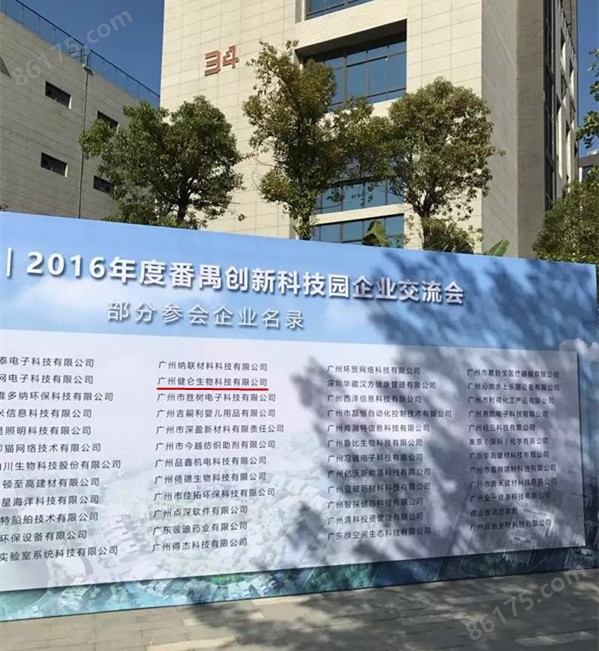請輸入產品關鍵字:
郵編:510660
聯(lián)系人:楊永漢
電話:86-020-82574011
傳真:86-020-32206070
手機:13802525278
留言:發(fā)送留言
個性化:www.jianlun45.com
網址:www.jianlun.com
商鋪:http://www.xldjsj.com/st199246/
【產品簡介】
【詳細說明】
弓形蟲IgG免疫熒光試劑盒(檢測狗)
Toxoplasma IFA Canine IgG Kit
廣州健侖生物科技有限公司
主要用途:用于檢測狗血清中的弓形蟲IgG抗體
產品規(guī)格:12 孔/張,10 張/盒
主要產品包括:包柔氏螺旋體菌、布魯氏菌、貝納特氏立克次體、土倫桿菌、鉤端螺旋體、新型立克次體、恙蟲病、立克次體、果氏巴貝西蟲、馬焦蟲、牛焦蟲、利什曼蟲、新包蟲、弓形蟲、貓流感病毒、貓冠狀病毒、貓皰疹病毒、犬瘟病毒、犬細小病毒等病原微生物的 IFA、MIF、ELISA試劑。
弓形蟲IgG免疫熒光試劑盒(檢測狗)
我司還提供其它進口或國產試劑盒:登革熱、瘧疾、西尼羅河、立克次體、無形體、蜱蟲、恙蟲、利什曼原蟲、RK39、漢坦病毒、深林腦炎、流感、A鏈球菌、合胞病毒、腮病毒、乙腦、寨卡、黃熱病、基孔肯雅熱、克錐蟲病、違禁品濫用、肺炎球菌、軍團菌、化妝品檢測、食品安全檢測等試劑盒以及日本生研細菌分型診斷血清、德國SiFin診斷血清、丹麥SSI診斷血清等產品。
歡迎咨詢
歡迎咨詢2042552662

| JL-FL38 | parkeri立克次體IgG ELISA | R. parkeri IgG ELISA Kit |
| JL-FL39 | montanensis立克次體IgG ELISA | R. montanensis IgG ELISA Kit |
| JL-FL40 | EB病毒衣殼IgG免疫熒光玻片試劑盒 | EBV Viral Capsid IgG IFA Kit |
| JL-FL41 | EB病毒衣殼IgM免疫熒光玻片試劑盒 | EBV Viral Capsid IgM IFA Kit |
| JL-FL42 | EB病毒早期抗原IgG免疫熒光玻片試劑盒 | EBV Early Antigens IgG IFA Kit |
| JL-FL43 | 鉤端螺旋體IgG免疫熒光試劑盒 | Leptospira IgG IFA Kit |
| JL-FL44 | 鉤端螺旋體IgM免疫熒光試劑盒 | Leptospira IgM IFA Kit |
| JL-FL45 | 果氏巴貝西蟲免疫熒光玻片 | Babesia microti IFA Substrate slide |
| JL-FL46 | 果氏巴貝西蟲IgG免疫熒光試劑盒 | Babesia microti IgG IFA Kit |
| JL-FL47 | 果氏巴貝西蟲IgM免疫熒光試劑盒 | Babesia microti IgM IFA Kit |
| JL-FL48 | 埃立克體IgG微量免疫熒光試劑盒 | Ehrlichia canis Canine IFA IgG Kit |
| JL-FL49 | 包柔氏螺旋體菌IgG免疫熒光試劑盒 | Borrelia IgG IFA Kit |
| JL-FL50 | 布魯氏菌IgG免疫熒光試劑盒 | Brucella IgG IFA Kit |
| JL-FL51 | 里氏新立克次體IgG免疫熒光試劑盒 | Neorickettsia risticii IgG IFA Kit |
| JL-FL52 | 弓形蟲IgG免疫熒光試劑盒(檢測貓) | Toxoplasma IFA Feline IgG Kit |
| JL-FL53 | Toxoplasma IFA Canine IgG Kit |
二維碼掃一掃
【公司名稱】 廣州健侖生物科技有限公司
【】 楊永漢
【】
【騰訊 】 2042552662
【公司地址】 廣州清華科技園創(chuàng)新基地番禺石樓鎮(zhèn)創(chuàng)啟路63號二期2幢101-3室
【企業(yè)文化】


此前研究人員已經發(fā)現了 5-LO 在炎性疾病比如哮喘癥發(fā)病中的角色,研究者 Jessica Roos 教授表示,這項研究中我們發(fā)現,急性髓性白血病亞群中的白血病干細胞或許可以被5-LO抑制劑有效地選擇性攻擊,而且這種現象均可以在細胞培養(yǎng)基模型和白血病小鼠模型中觀察到。
研究者表示,這項研究為開發(fā)新型的5-脂氧合酶抑制劑來抑制白血病的存貨,從而為抑制并治療急性髓性白血病提供了新的研究依據和線索。后期研究中研究人員還將通過深入研究來揭示5-脂氧合酶抑制劑在抑制白血病干細胞功能中的作用和機制。
科學家們早就知道,當細胞反復分裂時,就會發(fā)生染色體缺陷。隨著時間的推移,這些缺陷就會導致癌癥的發(fā)作。
現在,來自英國卡迪夫大學的鄧肯·貝爾德教授和他的研究團隊與來自明尼蘇達大學的埃里克A·亨德里克森合作已經確定了,人類細胞為了生存所需的這些類型的缺陷的一個特定基因。
“我們發(fā)現,似乎是在進化過程中,可以驅動癌癥的關鍵基因,” 卡迪夫大學的癌癥與基因研究所的貝爾德教授說。“這是該基因的新作用,使其成為潛在的治療靶點。”
隨著細胞的分裂,它們的端粒——保護染色體末端免受損壞的DNA“帽”——縮短,使殘余的染色體容易彼此粘在一起。
在正常細胞中,這種染色體的粘性是一個死亡的信號,該信號能夠觸發(fā)缺陷的細胞在清理過程中移動,并幫助清理它們的過程。
然而,惡性細胞,在某種程度上能夠躲避這個清理過程。
發(fā)表于近期的《Cell Reports》雜志上的一項研究,確定一個允許衰老的細胞逃避死亡的重要組成部分。
使用*基因靶向技術使人類細胞中的特定基因失去活性,然后研究端粒融合的影響,研究人員發(fā)現,只有當連接酶3基因被激活時而不是它的作用,細胞才能逃過一死,這似乎更喜歡推動染色體內而不是不同的染色體之間的融合。
“在許多人類癌癥中,已經確定端粒發(fā)生功能障礙,正如我們先前的研究顯示,短端粒可以預測慢性淋巴細胞白血病患者的預后,可能也可用于很多其他類型的腫瘤,” 貝爾德教授說。“因此,這一過程需要連接酶3的發(fā)現是極其重要的。”
有趣的是,這項研究成為可能,是因為,在一次會議上卡迪夫大學的的貝爾德教授和明尼蘇達大學的埃里克·亨德里克森教授的邂逅。
兩人很快就發(fā)現,他們都期待連接酶3在癌癥中的作用,于是,他們決定合作。
“此次合作得到了回報,因為我們發(fā)現了別人沒有發(fā)現的東西,” 亨德里克森教授說。
重要的是,進一步的研究已經在進行中。特別是,細胞逃避死亡依賴于連接酶3,反過來,依賴另一個關鍵的DNA修復基因,p53基因的活性則可修復細胞。
“既然p53是人類腫瘤中zui常見的突變基因,現在我們理應認識到這兩個基因的相互作用,看看我們是否能夠利用這些信息來制定協(xié)同治療方式,” 亨德里克森教授補充說。
Researchers have previously discovered the role of 5-LO in the pathogenesis of inflammatory diseases such as asthma. Researchers Professor Jessica Roos said that in this study, we found that leukemic stem cells in the acute myelogenous leukemia subgroup may be blocked by 5- LO inhibitors effectively selectively attack, and this phenomenon can be observed in both cell culture and leukemia mouse models.
The researchers said the study provides new research evidence and clues for the suppression and treatment of acute myeloid leukemia in order to develop new 5-lipoxygenase inhibitors to inhibit the stock of leukemia. In the latter part of the study, researchers will further study to reveal the role and mechanism of 5-lipoxygenase inhibitors in inhibiting leukemia stem cell function.
Scientists have long known that chromosomal defects occur when cells repeatedly divide. Over time, these shortcomings can lead to the onset of cancer.
Now that Professor Duncan Baird from Cardiff University in the UK and his research team have worked with Eric A. Hendrickson from the University of Minnesota, one of these types of defects that human cells need in order to survive Specific gene.
"We found it to be a key gene that can drive cancer in the evolutionary process," said Professor Baird, a professor of cancer and genetics at Cardiff University. "This is a new role for the gene, making it a potential therapeutic target."
As the cells divide, their omeres - protecting the chromosome ends from damaged DNA "caps" - shorten the residual chromosomes to stick together easily.
In normal cells, the stickiness of this chromosome is a signal of death that triggers defective cells to move during the cleaning process and help cleanse them.
However, malignant cells, to some extent, are able to evade this cleanup process.
A study published in the recent Cell Reports identified an important component that allows aging cells to escape death.
Using advanced gene targeting techniques to inactivate specific genes in human cells and then to study the effects of omere fusion, the researchers found that the cell can escape death only if it is activated rather than its effect Seems to prefer to promote the fusion between chromosomes rather than different chromosomes.
"In many human cancers, dysfunction of omeres has been identified and, as our previous study showed, short omeres predict the prognosis of patients with chronic lymphocytic leukemia and may also be used in many other types of tumors," said Professor Baird . "Therefore, the discovery that ligase 3 is required for this process is extremely important."
Interestingly, the study was made possible by encounters with Professor Baird at Cardiff University and Professor Eric Hendrickson at the University of Minnesota at an international conference.
They quickly discovered that they both looked for the role of ligase 3 in cancer, so they decided to work together.
"This cooperation paid off because we found something that others did not find," said Hendrickson.
Importantly, further research is already under way. In particular, cell death depends on Ligase 3, which, in turn, relies on another key DNA repair gene whose activity can repair cells.
"Since p53 is the most common mutation in human tumors, we should now recognize the interaction of these two genes and see if we can use that information to formulate a co-treatment approach," Professor Hendrickson added.


 QQ交談
QQ交談 MSN交談
MSN交談
